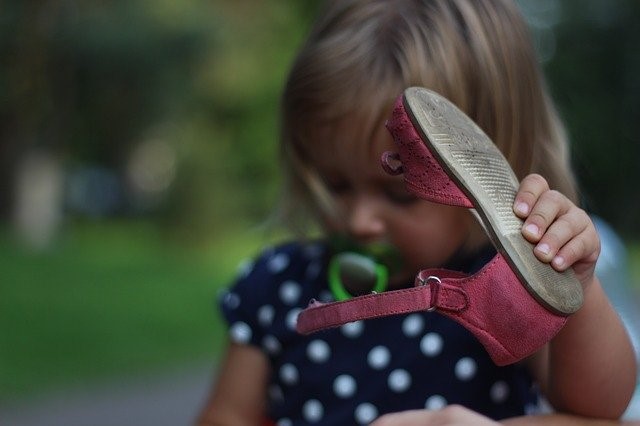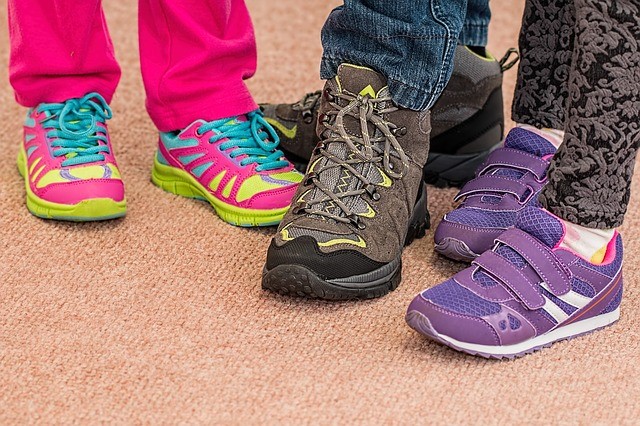According to a study, 65% of children wear ill-fitting shoes. Unknowingly, your kid could be one of them. Indeed, there are potentially serious effects of ill-fitting shoes in children; not only to their feet but also to their physiological and mental growth.
Several factors such as age, gender, body mass index (BMI) and physical activity influence a child’s foot development. Merely wearing the wrong type of shoes or shoe size may likely cause short term as well as long term health risks for your kids.
As a word of wisdom says, good shoes take you to good places. True enough, a good pair of shoes will not only get kids to wonderful places but protect children’s feet from getting injuries against different ground textures and temperatures.
If you are unsure whether or not your child is wearing shoes that fit properly, here is a guide you can follow the next time you’re buying shoes for your little one.
How to Get the Right Shoe Type Size for Children
For infants
Until an infant learns to walk, all they need are soft, warm booties or socks.
Introducing your baby early to tight crib shoes may only hinder their feet to stretch, breathe and feel different kinds of surfaces vital for sensory development.

For toddlers
When indoors, it is ideal for toddlers to go barefoot to strengthen the muscles around their ankles and develop arches. Just make sure the ground is always free from hazardous objects that a child may accidentally step upon.
Young children toddling outdoors may wear lightweight child shoes that have flexible and soft soles to encourage natural foot movement.
For children 4 years old and above
Opt to shop for shoes at the end of the day
Various morning activities make your child’s feet expand by afternoon. This enables you to choose a shoe size that will fit the feet in its largest possible state.
Choose natural shoe materials
Leather, suede and canvas are examples of breathable shoe materials. When these are combined with mesh, it permits air circulation allowing your child’s foot to stay cool and dry.
Carefully assess the overall shoe fit
While your child is trying the shoes on, check the length, width, height and room for the toes, if everything fits comfortably.
A good shoe fit should be snug in the midfoot and heel part.
On the other hand, the toes must have plenty of room. Children should be able to wiggle their toes. Hence, it is important to consider a wide toe box in choosing the right type of kids’ shoes.
As a general rule, always ensure a half-inch clearance between the front end of the shoe and the outermost tip of your child’s toes.
Check your child’s foot length every 3-6 months
Every kid grows their feet at their own rate. So it is best to regularly measure the length of your child’s growing feet and frequently inspect for any sign your child might already have a snug or tight shoes like skin irritation.
7 Adverse Effects of Ill-fitting Shoes in Children
1. Minor Foot Ailments
Wearing shoes too tight for long periods of time may give your child foot problems such as reddened skin, blisters, cuts and sore spots.
2. Ingrown Toenails
Footwear that puts too much pressure on the corners of the toes makes the toenails grow into the soft flesh. This, in turn, may result in pain, swelling and infection.
3. Foot Deformities
If a child wears ill-fitting shoes and frequently rubs feet against neither breathable nor bendable footwear materials, it may progressively cause hammertoes, calluses, corns and bunions.

4. Falls
Poorly-fitting shoes that are either too loose, too snug and without secure closure may affect children to trip often and fall down.
5. Arthritis
Prolonged use of ill-fitting shoes that don’t provide proper support may increase the risk of developing arthritis or joint pain in hips, knees, ankles and feet later in life.
6. Nerve Damage
Ill-fitting shoes may stress the foot repetitively and put extra pressure on the nerves resulting in nerve damage. Signs of nerve damage involve sensations such as numbness, tingling, muscle weakness and unusual pain.
7. Anxiety
Suffering from foot malformation, discomfort, pain and frequent fall in wearing ill-fitting shoes may cause an individual to become anxious. This may lead to poor self-esteem and affects your child’s quality of life.

The Takeaway about Ill-Fitting Shoes in Children
The side effects of ill-fitting shoes in children may have short to long term physical as well as mental implications. As a parent, it is your responsibility to properly choose the type and size of footwear fit for your child. You can do that by making use of the tips mentioned above and avoid your own child from developing foot problems and underlying health risks.




